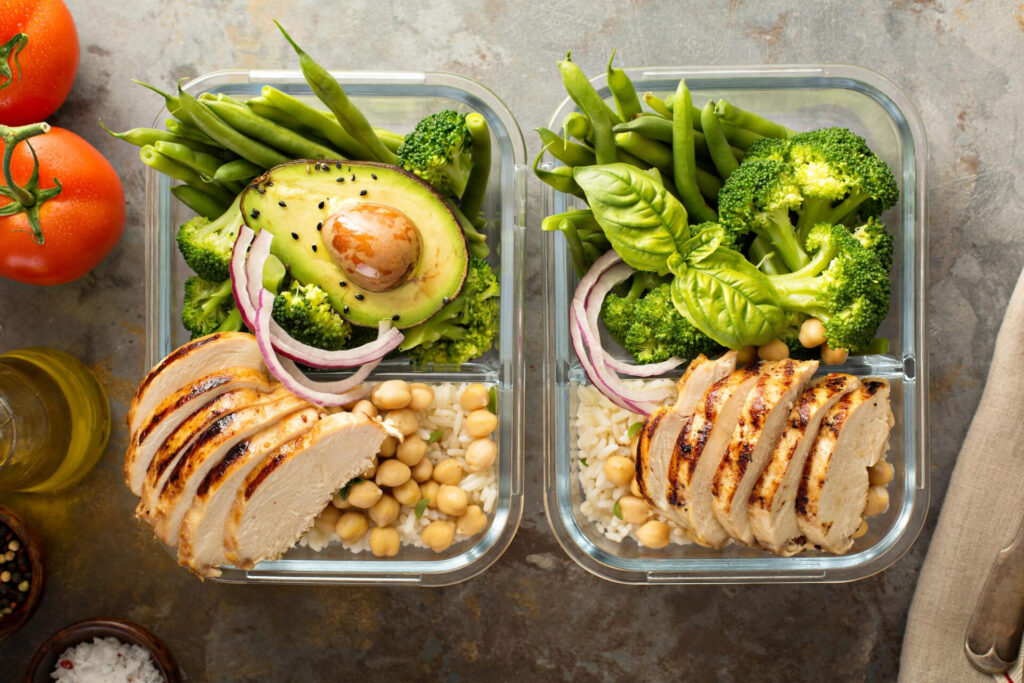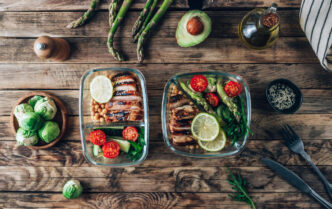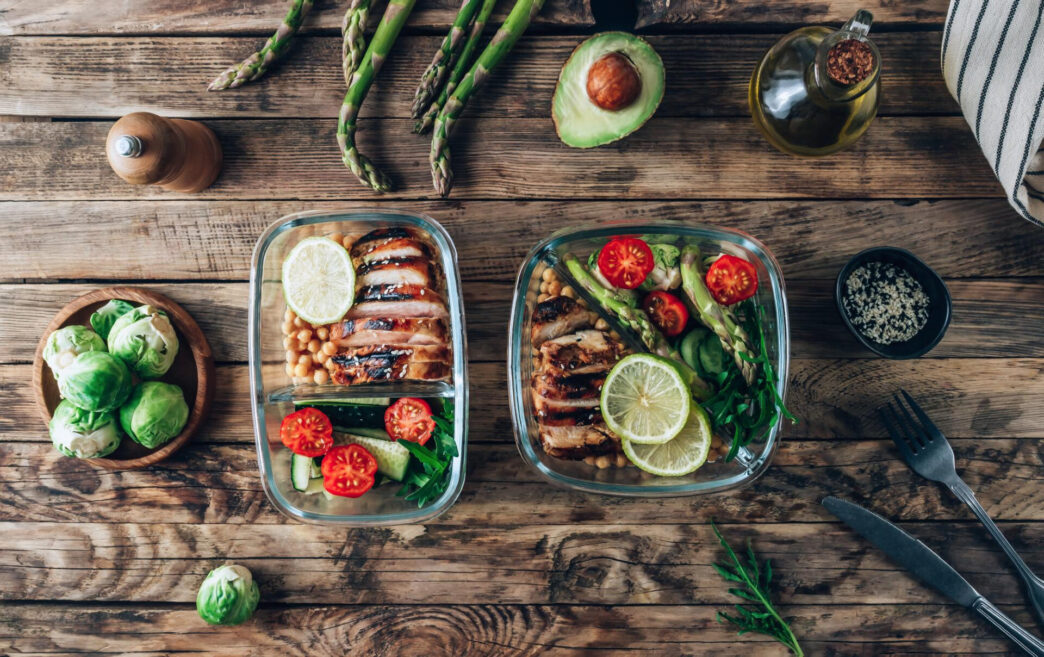Fuel Your Body, Feed Your Life
🌞 Why Energy Starts on Your Plate
Feeling energized all day isn’t just about sleeping well or drinking coffee—it starts with what’s on your plate. Food is more than fuel; it’s information. Every bite tells your body how to feel, move, think, and recover. If you often experience that mid-afternoon slump, sugar cravings, or struggle to focus, the answer may not be in doing more—but in eating differently.
The truth is, what you eat can either power you up or slow you down. A clean eating meal plan focused on whole, nutrient-dense foods can transform your day, from the moment you wake up to the quality of your sleep at night.
“The food you eat can be either the safest and most powerful form of medicine or the slowest form of poison.”
Ann Wigmore
⚡ The Clean Energy Shift
Eat clean energize daily isn’t just a catchy phrase—it’s a lifestyle that helps break free from the cycle of energy spikes and crashes. Clean eating doesn’t mean restriction; it means eating foods that nourish your body, support your metabolism, and deliver stable energy over hours—not minutes.
Instead of chasing temporary energy through sugar or caffeine, you can unlock lasting energy through smarter food choices. Imagine a life where:
- Breakfast energizes rather than drains
- Snacks keep you going without the crash
- Meals are delicious and deeply nourishing
- You feel full, light, and focused—naturally
That’s the power of healthy eating for energy. And yes—it’s absolutely achievable without obsessing over calories or cutting out all the foods you love.
🧭 What This Guide Will Give You
This isn’t a diet plan—it’s a practical and flexible roadmap to eating better and living brighter. You’ll discover:
- Clean eating principles that actually work
- Foods that boost energy and mental clarity
- Smart, balanced meal planning ideas
- Hydration strategies that make a real difference
- Gut-friendly habits for better digestion and stamina
- Sustainable routines to make eating clean second nature
Everything in this guide is designed to fit real life—even when you’re busy, stressed, or eating on the go.
So, if you’re ready to reclaim your energy, sharpen your mind, and feel amazing in your body, let’s get started. Because it’s not just about eating clean—it’s about living clean, every single day.
Understanding Clean Eating
What Does “Eating Clean” Mean?
Clean eating is often misunderstood as a restrictive diet or a temporary trend, but in reality, it is a long-term, sustainable approach to nutrition. At its core, clean eating focuses on consuming whole, minimally processed foods that nourish the body and promote optimal health. This means prioritizing fresh fruits, vegetables, whole grains, lean proteins, and healthy fats while avoiding highly processed and artificial ingredients.
Unlike fad diets that focus on eliminating entire food groups or drastically cutting calories, clean eating is about making better food choices—not deprivation. It’s about quality over quantity, choosing foods in their most natural state, and paying attention to how they make you feel.
The Core Principles of Clean Eating
Clean eating isn’t a one-size-fits-all approach, but several foundational principles guide this lifestyle:
- Prioritize Whole, Unprocessed Foods
- Choose foods that are as close to their natural form as possible.
- Fresh vegetables, fruits, whole grains, nuts, seeds, and lean proteins should form the base of your diet.
- Limit Processed and Packaged Foods
- Processed foods often contain preservatives, artificial flavors, and hidden sugars that can disrupt your energy levels and overall health.
- A good rule of thumb: if a food has a long list of ingredients you can’t pronounce, it’s best to avoid it.
- Focus on Nutrient Density, Not Just Calories
- 100 calories from a candy bar are not the same as 100 calories from almonds. The latter provides healthy fats, fiber, and essential nutrients, while the former is mostly sugar and empty calories.
- Prioritizing nutrient-dense foods ensures you get the vitamins, minerals, and antioxidants needed for sustained energy.
- Eat Balanced Meals with Protein, Healthy Fats, and Fiber
- Each meal should contain a balance of macronutrients to help regulate blood sugar levels and prevent energy crashes.
- Protein keeps you full and helps with muscle repair.
- Healthy fats support brain function and hormone balance.
- Fiber aids digestion and promotes a steady release of energy.
- Stay Hydrated with Water and Natural Beverages
- Hydration is just as important as food choices in maintaining energy.
- Water, herbal teas, and fresh homemade juices should replace sugary sodas and energy drinks.
- Practice Mindful Eating
- Eat with intention and awareness. Avoid distractions like TV or scrolling on your phone while eating.
- Chew slowly and savor your food to improve digestion and satisfaction.
- Source Quality Ingredients Whenever Possible
- Organic, local, and seasonal foods are often more nutritious and free from harmful pesticides.
- Grass-fed meats, wild-caught fish, and pasture-raised eggs offer better nutrient profiles than conventionally farmed alternatives.
Debunking Myths About Clean Eating
There are many misconceptions about clean eating that prevent people from fully embracing this lifestyle. Let’s address some of the most common myths:
🔹 Myth 1: Clean Eating is Expensive
While organic and high-quality ingredients can be costly, clean eating does not require expensive products. Buying seasonal produce, whole grains, and legumes in bulk can make clean eating affordable. Cooking at home also saves money compared to processed convenience foods and restaurant meals.
🔹 Myth 2: Clean Eating Means Cutting Out All Carbs
Carbohydrates are essential for energy. The key is choosing complex carbs like quinoa, brown rice, sweet potatoes, and whole grains rather than refined carbs like white bread and pastries.
🔹 Myth 3: Clean Eating is Time-Consuming
With a bit of meal planning and batch cooking, clean eating can be just as convenient as fast food. Preparing large portions of healthy meals in advance makes it easier to eat well throughout the week.
🔹 Myth 4: You Have to Give Up Your Favorite Foods
Clean eating isn’t about restriction; it’s about upgrading your choices. Love pasta? Swap white pasta for whole-grain or chickpea pasta. Enjoy sweets? Make homemade treats using natural sweeteners like honey or dates.
🔹 Myth 5: Clean Eating is Only for Weight Loss
While clean eating can support weight loss, it’s ultimately about improving health, increasing energy, and feeling your best—not just about shedding pounds.
Clean eating is a powerful tool for boosting energy, stabilizing mood, and improving overall well-being. By focusing on whole foods, your body will naturally begin to function better, leading to long-lasting health benefits.
In the next section, we will dive deeper into the nutrient-dense foods that serve as the foundation for energy and vitality.

Nutrient-Dense Foods: The Building Blocks of Energy
Clean eating is not just about avoiding unhealthy foods—it’s about choosing the right foods that fuel the body efficiently. Nutrient-dense foods provide essential vitamins, minerals, and macronutrients that sustain energy levels, improve metabolism, and enhance overall well-being. Understanding which foods offer the most benefits allows for a smarter, more effective approach to daily nutrition.
Whole Foods vs. Processed Foods
Whole foods are foods in their natural state, unaltered or minimally processed. These include:
✔️ Fresh vegetables and fruits
✔️ Whole grains (quinoa, brown rice, oats)
✔️ Lean proteins (wild-caught fish, pasture-raised poultry, legumes)
✔️ Healthy fats (avocados, nuts, seeds, olive oil)
In contrast, processed foods have been modified from their natural form, often with added sugars, preservatives, artificial flavors, and unhealthy fats. Examples include:
❌ Fast food and frozen meals
❌ Packaged snacks (chips, crackers, candy bars)
❌ Sugary cereals and soft drinks
❌ Processed meats (hot dogs, bacon, deli meats)
Choosing whole foods over processed options reduces inflammation, stabilizes blood sugar, and provides a steady release of energy throughout the day.
The Role of Macronutrients in Energy Production
Macronutrients—carbohydrates, proteins, and fats—are the body’s primary sources of energy. Each plays a crucial role in maintaining stamina and supporting metabolic functions.
1. Complex Carbohydrates: The Primary Energy Source
Carbohydrates provide quick energy, but not all carbs are created equal. Refined carbs (white bread, pastries, sugary drinks) cause blood sugar spikes and crashes, leading to fatigue. Complex carbohydrates, on the other hand, provide a steady release of glucose and maintain stable energy levels.
Best complex carbs for sustained energy:
✔️ Sweet potatoes
✔️ Quinoa
✔️ Brown rice
✔️ Oats
✔️ Lentils
✔️ Whole grain bread
2. Protein: The Body’s Repair and Recovery Fuel
Protein is essential for muscle repair, immune function, and sustained energy. Unlike carbohydrates, protein takes longer to digest, helping to keep hunger and energy levels balanced.
Best sources of clean protein:
✔️ Wild-caught salmon
✔️ Pasture-raised eggs
✔️ Lean poultry
✔️ Greek yogurt
✔️ Chickpeas and black beans
✔️ Hemp seeds and chia seeds
3. Healthy Fats: The Brain and Hormone Support
Fats are essential for brain function, hormone production, and long-lasting energy. They also help absorb fat-soluble vitamins (A, D, E, K). The key is choosing healthy fats over trans fats or heavily processed oils.
Best sources of healthy fats:
✔️ Avocados
✔️ Extra virgin olive oil
✔️ Nuts (almonds, walnuts, cashews)
✔️ Seeds (flaxseeds, sunflower seeds)
✔️ Coconut oil (in moderation)
Essential Micronutrients for Vitality
While macronutrients provide energy, micronutrients support the body’s ability to use that energy efficiently. Certain vitamins and minerals are particularly important for reducing fatigue and maintaining focus.
1. Iron: The Oxygen Transporter
Iron deficiency is one of the most common causes of chronic fatigue. Iron helps transport oxygen to cells, playing a direct role in energy levels.
Iron-rich foods:
✔️ Spinach
✔️ Lentils
✔️ Grass-fed beef
✔️ Pumpkin seeds
✔️ Dark chocolate (85%+ cacao)
2. Magnesium: The Stress-Reducer
Magnesium plays a role in energy production, muscle relaxation, and nervous system balance. Low magnesium levels can lead to weakness, muscle cramps, and low energy.
Best sources of magnesium:
✔️ Leafy greens (kale, Swiss chard)
✔️ Almonds and cashews
✔️ Dark chocolate
✔️ Bananas
✔️ Whole grains
3. B Vitamins: The Metabolism Boosters
B vitamins help convert food into usable energy and support brain function. Deficiency in B12 or B6 can cause fatigue, poor concentration, and mood swings.
Foods rich in B vitamins:
✔️ Eggs
✔️ Nutritional yeast
✔️ Salmon
✔️ Fortified whole grains
✔️ Leafy greens
4. Vitamin C: The Immunity and Energy Enhancer
Vitamin C not only supports the immune system but also helps the body absorb iron more effectively.
Best sources of vitamin C:
✔️ Oranges
✔️ Bell peppers
✔️ Kiwi
✔️ Strawberries
✔️ Broccoli
Eating for energy is about balance, variety, and consistency. A diet rich in nutrient-dense whole foods provides steady, long-lasting vitality instead of short bursts of energy followed by crashes.
The next section will explore hydration and its critical role in maintaining high energy levels throughout the day.
Hydration and Its Impact on Energy Levels
Hydration is often overlooked when it comes to maintaining steady energy levels, yet it is one of the most fundamental aspects of overall health. The human body is made up of approximately 60% water, and even slight dehydration can lead to fatigue, brain fog, and reduced physical performance. Proper hydration supports digestion, circulation, temperature regulation, and the efficient delivery of nutrients to cells. Without enough water, the body struggles to produce energy, leading to sluggishness and decreased focus.
Water: The Ultimate Energy Booster
Water is the most natural and effective way to stay hydrated. Unlike caffeinated drinks or sugary sodas, water is absorbed efficiently and helps flush out toxins, regulate body temperature, and support metabolic functions.
Signs of Dehydration That Impact Energy
Even mild dehydration (as little as 1–2% loss of body water) can cause noticeable fatigue and cognitive impairment. Common signs include:
❌ Low energy and sluggishness
❌ Difficulty concentrating or brain fog
❌ Dry mouth and lips
❌ Dizziness or headaches
❌ Muscle cramps
❌ Dark yellow urine (a clear sign of dehydration)
How Much Water is Needed for Optimal Energy?
The standard recommendation is at least 8 glasses (64 oz) of water per day, but individual hydration needs vary depending on activity level, climate, and diet. A better guideline is to drink half of body weight in ounces of water per day. For example:
✔️ A person weighing 150 lbs should drink 75 oz (about 9 cups) of water daily
✔️ Athletes or individuals in hot climates may need even more
Best Times to Drink Water for Maximum Energy
Drinking water strategically throughout the day prevents dehydration-related fatigue and optimizes hydration levels:
✔️ First thing in the morning: Rehydrates the body after sleep and kickstarts metabolism
✔️ 30 minutes before meals: Aids digestion and prevents overeating
✔️ Before, during, and after exercise: Supports endurance and recovery
✔️ Late afternoon slump: Helps fight fatigue and curb unnecessary snacking
✔️ Before bed (but not too much): Prevents dehydration overnight
Electrolytes and Hydration Balance
Electrolytes—sodium, potassium, magnesium, and calcium—help regulate fluid balance in the body. While drinking water is essential, consuming electrolytes ensures that water is absorbed properly rather than being flushed out too quickly.
Best Natural Electrolyte Sources
✔️ Coconut water – A natural alternative to sports drinks, rich in potassium
✔️ Bananas and avocados – Excellent sources of potassium for muscle and nerve function
✔️ Leafy greens (spinach, kale) – Contain magnesium, which helps with muscle relaxation and energy production
✔️ Himalayan pink salt – Contains trace minerals that help maintain fluid balance
✔️ Chia seeds – Absorb water and release electrolytes for prolonged hydration
Homemade Natural Electrolyte Drink
For an easy, natural hydration booster, mix:
- 16 oz of water
- Juice of ½ lemon
- A pinch of Himalayan salt
- 1 tsp honey or maple syrup (optional for energy)
- A splash of coconut water (for extra potassium)
This simple drink replenishes lost electrolytes and prevents dehydration-related fatigue without artificial sugars or additives found in commercial sports drinks.
The Role of Herbal Teas and Infused Water
For those who struggle to drink plain water, herbal teas and infused water are excellent alternatives that provide additional benefits.
Best Herbal Teas for Energy and Hydration
✔️ Peppermint tea – Boosts alertness and digestion
✔️ Ginger tea – Enhances circulation and supports immune function
✔️ Rooibos tea – Caffeine-free and packed with antioxidants
✔️ Green tea – Contains L-theanine for a gentle, sustained energy boost
✔️ Chamomile tea (before bed) – Helps prevent dehydration overnight and promotes relaxation
Easy Infused Water Recipes
Infusing water with fresh fruits and herbs enhances hydration by adding subtle flavors and extra nutrients. Here are some energizing combinations:
🍋 Lemon + Mint + Cucumber – Refreshing and aids digestion
🍊 Orange + Basil + Ginger – Supports metabolism and immunity
🍓 Strawberry + Lime + Chia Seeds – Hydrating and rich in antioxidants
🍉 Watermelon + Rosemary – Helps reduce bloating and supports electrolyte balance
Proper hydration is one of the simplest yet most effective ways to enhance daily energy levels. Drinking enough water, replenishing electrolytes, and incorporating hydrating herbal teas can prevent fatigue, improve mental clarity, and support overall well-being.
Next, the focus will shift to meal planning for consistent energy—strategies to structure meals and snacks for long-lasting vitality.
Meal Planning for Consistent Energy
A well-structured meal plan is essential for maintaining steady energy levels throughout the day. The body relies on a balanced intake of macronutrients and micronutrients to sustain focus, endurance, and overall well-being. Without proper planning, energy crashes, cravings, and sluggishness become common. By structuring meals strategically, it becomes easier to fuel the body efficiently and avoid the highs and lows of unstable blood sugar levels.
Structuring Balanced Meals
Every meal should include a balance of protein, healthy fats, fiber-rich carbohydrates, and micronutrients. This combination ensures a steady release of energy rather than a quick spike followed by a crash.
The Ideal Meal Composition
A well-balanced plate should consist of:
✔️ 40–50% fiber-rich carbohydrates (vegetables, whole grains, legumes)
✔️ 25–30% lean protein (fish, poultry, tofu, lentils)
✔️ 20–30% healthy fats (avocados, nuts, olive oil, seeds)
Why This Balance Works
- Carbohydrates provide the body with glucose, its main energy source.
- Protein slows digestion, keeping energy levels stable and reducing sugar spikes.
- Fats support brain function and keep hunger in check.
Example of a Balanced Meal
✔️ Grilled salmon with quinoa and steamed broccoli, drizzled with olive oil
- Protein: Salmon
- Healthy fats: Olive oil
- Fiber-rich carbs: Quinoa and broccoli
✔️ Scrambled eggs with sautéed spinach and whole-grain toast
- Protein: Eggs
- Healthy fats: Egg yolks and olive oil
- Fiber-rich carbs: Whole-grain toast and spinach
Timing Meals for Sustained Energy
The timing of meals plays a crucial role in preventing fatigue, stabilizing blood sugar, and improving metabolic efficiency. Long gaps between meals can lead to energy crashes and cravings for sugary or processed foods.
Best Eating Schedule for Energy Stability
⏰ Morning (within 60 minutes of waking up):
Start the day with a protein-rich breakfast to kickstart metabolism and prevent mid-morning crashes.
⏰ Every 3–4 hours:
Eating balanced meals at regular intervals keeps blood sugar stable and prevents extreme hunger.
⏰ Mid-afternoon snack:
A nutrient-dense snack around 2–4 PM prevents the common afternoon slump.
⏰ Evening meal (3 hours before bed):
A balanced dinner with lean protein and healthy fats ensures stable blood sugar overnight and better sleep quality.
The Role of Circadian Rhythm in Meal Timing
The body follows a natural circadian rhythm that influences metabolism. Eating large, heavy meals late at night can disrupt sleep and digestion, leading to morning fatigue and sluggishness.
✔️ Larger meals earlier in the day = more efficient energy usage.
✔️ Light dinner with lean protein and veggies = better sleep and recovery.
Smart Snacking: Fueling Between Meals
Healthy snacks help bridge the gap between meals, prevent overeating, and provide a boost in energy without blood sugar spikes. The key is to choose nutrient-dense options that contain a mix of protein, fiber, and healthy fats.
Best Snacks for Sustained Energy
✔️ Handful of almonds and dark chocolate (85% cacao) – Healthy fats + magnesium for energy
✔️ Apple with almond butter – Fiber + protein + natural sugars for sustained release
✔️ Greek yogurt with berries and flaxseeds – Protein + antioxidants + omega-3s
✔️ Hard-boiled eggs with hummus – Protein + healthy fats for long-lasting fullness
✔️ Oatmeal with chia seeds and walnuts – Complex carbs + fiber for slow energy release
Snacks to Avoid (That Cause Energy Crashes)
❌ Sugary granola bars – High in refined sugars, leading to crashes
❌ White bread with jam – Spikes blood sugar and causes rapid energy drops
❌ Chips and processed snacks – High in unhealthy fats and sodium, offering no real energy benefits
Meal Prepping for Energy Optimization
Preparing meals in advance ensures healthy food choices are always available, reducing the temptation for processed, convenience foods.
Simple Meal Prep Strategies
✔️ Batch cook grains and proteins – Pre-cook quinoa, brown rice, or roasted vegetables for the week.
✔️ Pre-portion healthy snacks – Store nuts, fruit, or yogurt in portioned containers.
✔️ Have grab-and-go options – Keep hard-boiled eggs, hummus, and pre-cut veggies in the fridge.
✔️ Make overnight oats – A quick, fiber-rich breakfast ready in the morning.
Easy Make-Ahead Meal Ideas
🥗 Quinoa and roasted veggie bowls – Fiber and plant-based protein for all-day energy.
🥚 Egg muffins with spinach and feta – Portable, protein-rich breakfast option.
🥜 Energy balls with dates, nuts, and cacao – Natural sweeteners with healthy fats and protein.
Key Takeaways
✔️ Eat balanced meals with a mix of protein, healthy fats, and fiber-rich carbs.
✔️ Time meals properly to prevent blood sugar crashes and maintain energy.
✔️ Choose smart snacks that support energy rather than cause spikes and dips.
✔️ Plan and prep meals in advance to make clean eating effortless.
Next, the focus will shift to the gut-energy connection—exploring how gut health directly impacts energy levels and overall well-being.
The Gut-Energy Connection
The connection between gut health and energy levels is one of the most overlooked aspects of overall well-being. The gut, often referred to as the “second brain,” plays a crucial role in digestion, nutrient absorption, immune function, and even mood regulation. When gut health is compromised, it can lead to fatigue, brain fog, and poor metabolic efficiency. Supporting gut health through clean eating can dramatically improve energy levels and overall vitality.
How a Healthy Gut Supports Energy
A well-balanced gut microbiome—a diverse ecosystem of trillions of bacteria in the digestive tract—contributes to energy production in multiple ways:
✔️ Enhances Nutrient Absorption – A healthy gut ensures efficient absorption of essential vitamins and minerals needed for energy production, such as B vitamins, iron, and magnesium.
✔️ Reduces Inflammation – An imbalanced gut can lead to chronic inflammation, which drains energy and contributes to fatigue. Anti-inflammatory foods help keep gut health in check.
✔️ Regulates Blood Sugar – The gut microbiome influences insulin sensitivity and helps prevent blood sugar spikes and crashes that cause energy fluctuations.
✔️ Affects Mood and Mental Clarity – The gut produces over 90% of the body’s serotonin, which impacts motivation, focus, and emotional well-being. Poor gut health can lead to brain fog and sluggishness.
✔️ Supports Immune Function – A strong immune system prevents illness-related fatigue, and 70% of the immune system resides in the gut.
Best Foods for Gut Health
Clean eating naturally promotes a diverse and healthy gut microbiome. Incorporating gut-friendly foods boosts digestion, enhances energy, and supports overall wellness.
Fiber-Rich Foods (Prebiotics)
Prebiotics feed beneficial gut bacteria, helping them thrive and support digestion.
✔️ Bananas – Contain resistant starch, which promotes good bacteria growth.
✔️ Garlic & onions – Natural prebiotics that enhance gut flora diversity.
✔️ Leeks & asparagus – Provide inulin, a fiber that nourishes gut bacteria.
✔️ Oats & flaxseeds – Support digestion and keep blood sugar stable.
Probiotic-Rich Foods
Probiotics introduce beneficial bacteria into the gut, improving digestion and energy levels.
✔️ Greek yogurt (unsweetened) – Contains Lactobacillus and Bifidobacterium, which aid digestion.
✔️ Kefir – A fermented drink packed with live probiotics.
✔️ Sauerkraut & kimchi – Fermented vegetables rich in natural probiotics.
✔️ Miso & tempeh – Fermented soy products that promote gut health.
Healthy Fats for Gut Lining Support
Fats help maintain the integrity of the gut lining, preventing leaky gut syndrome, which can contribute to fatigue.
✔️ Avocados – Packed with fiber and healthy fats.
✔️ Extra virgin olive oil – Contains polyphenols that support gut health.
✔️ Nuts & seeds – Help reduce gut inflammation and support digestion.
Hydration for Gut Health
Adequate water intake is essential for proper digestion and preventing constipation.
✔️ Warm lemon water in the morning stimulates digestion.
✔️ Herbal teas like ginger and peppermint soothe the gut and reduce bloating.
Foods That Harm Gut Health and Drain Energy
Some foods disrupt gut balance, leading to inflammation, poor digestion, and fatigue.
Common Gut Irritants to Avoid
❌ Refined sugars – Feed harmful bacteria and cause gut dysbiosis.
❌ Artificial sweeteners (aspartame, sucralose) – Disrupt gut microbiome balance.
❌ Highly processed foods – Contain additives that irritate the gut lining.
❌ Excess alcohol – Weakens gut barrier function, leading to inflammation.
❌ Gluten (for sensitive individuals) – May cause bloating and sluggishness.
How Processed Foods Lead to Fatigue
Ultra-processed foods lack fiber, essential nutrients, and live enzymes, making them difficult for the gut to break down. They contribute to:
🚫 Sluggish digestion – Poor gut motility slows energy production.
🚫 Toxin buildup – Processed foods introduce preservatives and artificial chemicals, burdening the liver.
🚫 Unstable blood sugar levels – Low fiber content leads to energy crashes.
The Impact of Probiotics and Prebiotics on Energy
Adding both probiotics and prebiotics to the diet strengthens gut microbiota, improving digestion and reducing fatigue.
Probiotics vs. Prebiotics: What’s the Difference?
| Feature | Probiotics | Prebiotics |
|---|---|---|
| What they do | Add beneficial bacteria to the gut | Feed existing good bacteria |
| Sources | Yogurt, kefir, kimchi, sauerkraut | Bananas, onions, oats, asparagus |
| Benefits | Improve digestion, reduce bloating, enhance immunity | Boost gut flora, improve nutrient absorption |
How to Incorporate More into Daily Meals
✔️ Add sauerkraut or kimchi to grain bowls or salads.
✔️ Mix flaxseeds or chia seeds into smoothies or oatmeal.
✔️ Enjoy yogurt with berries and raw honey for a gut-friendly snack.
✔️ Use garlic and onions in home-cooked meals for natural prebiotics.
Key Takeaways
✔️ A healthy gut is essential for maintaining steady energy levels.
✔️ Prebiotic and probiotic foods support digestion and metabolism.
✔️ Eliminating processed foods reduces inflammation and fatigue.
✔️ Hydration and fiber-rich foods keep the digestive system functioning efficiently.
Next, the focus will shift to eliminating energy-draining foods from the diet—how refined sugars, processed foods, and caffeine affect energy levels.
References and Inspirational Resources
- Harvard T.H. Chan School of Public Health – The Nutrition Source: Healthy Eating Plate & Pyramid.
- National Institutes of Health – Dietary Guidelines for Americans 2020–2025.
- Academy of Nutrition and Dietetics – Smart Snacking Tips for Adults and Teens.
- Mayo Clinic – Nutrition and healthy eating: Whole foods and clean eating explained.
- Cleveland Clinic – How Gut Health Affects Your Whole Body.
- International Food Information Council – What Is Clean Eating?
- American Council on Exercise – The Role of Nutrition and Hydration in Energy Management.















